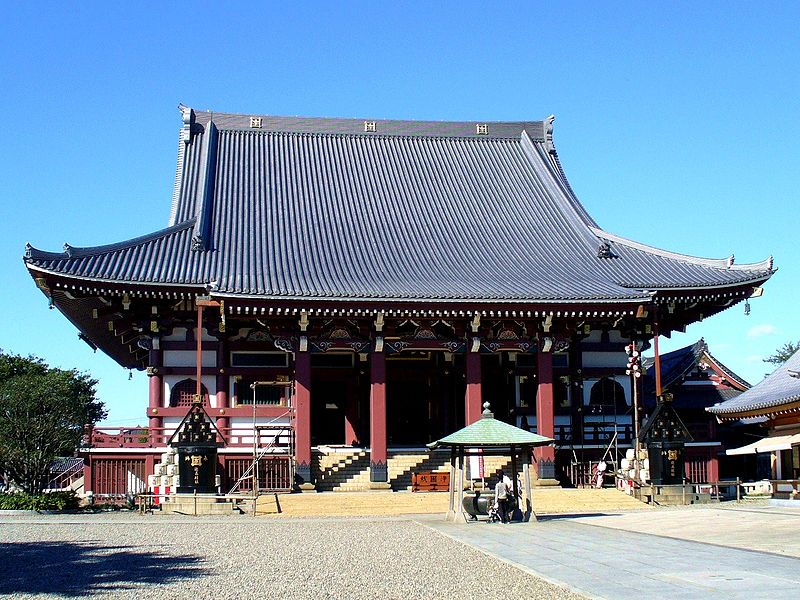Honmonji Temple
Founded just before his passing in 1282 by Nichiren Shōnin at the behest of devoted follower Ikegami Munenaka, Honmonji Temple, also known as Chōei-zan, or “ever-flourishing mountain,” embodies a rich history. Munenaka contributed 69,384 tsubo of land (51.89 acres), symbolizing the Chinese characters in the Lotus Sutra, as a gesture of devotion.
During World War II, the temple suffered heavy bombing on April 15, 1945, leading to the devastation of most structures, sparing only the main gate, the five-story pagoda, Kyōzō, and Tahōtō. Reconstruction ensued through nationwide contributions from followers, reviving the temple's sacred presence. A testament to the resilience of architecture, it incorporates balanced octagonal beams and holds its position as the oldest five-story pagoda in Tokyo.
Visitors ascend the steps, passing through the Niō-mon, a gate guarded by two deities, and arriving at the Soshi-dō, housing a statue of Nichiren Shōnin commissioned by his disciples. Beyond lies the Honden, enshrining Śākyamuni Buddha and the four Bodhisattvas. Adjacent stands the octagonal Gobyō-sho mausoleum, crafted from Japanese cypress, preserving some of Nichiren Shōnin's ashes in commemoration of his 700th death anniversary.
Honmonji Temple boasts the Kyōzō, a repository housing the entire Buddhist canon on revolving octagonal bookshelves. And it is also impressive with the Tahōtō, a red pagoda marking the site of Nichiren Shōnin's cremation and the sole structure of its kind in Japan, rebuilt in 1830. Honmonji Temple's history spans 700 years, making it a major center in the Nichiren Shū Order, alongside Kuonji Temple.
Address: 1 Chome-1-1 Ikegami, Ota City, Tokyo 146-8576, Japan
Phone: +81 3-3752-2331
Website: https://honmonji.jp/foreign/en.html











